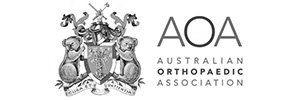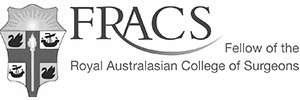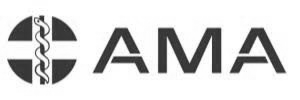Shoulder Trauma
What is Shoulder Trauma?
The shoulder is vulnerable to injury by it's exposed nature and complexity and as a result Shoulder Trauma is quite common.
Shoulder Trauma can range from a shoulder separation from a fall to a significant fracture of the shoulder blade (scapula) or collarbone (clavicle).
Shoulder injuries are diverse as are there treatments, below is a short summary.
What are the Types of Shoulder Trauma
There are two main types of Shoulder Trauma these are:
- Shoulder Fractures, and
- Shoulder Dislocations
Shoulder Fractures
There are three types of Shoulder Fractures these are: ...more
Clavicle Fracture
The clavicle (collarbone) is a long, thin bone that begins at the base of the neck and extends out to the shoulder., they can occur by
- falling,
- direct hit,
- contact sport, or
- motor vehicle accident
Proximal Humerus Fracture
A proximal humerus fracture is a fracture to top of the humerus bone, either at or just below the humeral head. The humeral head is often referred to as the ball that rests in the shoulder socket. Treatment is dependant on the bone displacement, joint health and the age and activity level of the patient.
Scapula Fracture
The scapula bone provides the connection between the chest and the arm. A scapular fracture can be caused by sport or a traumatic event and can also involve surrounding tissue damage such as nerves, ribs, or lung injuries.
Shoulder Dislocations
There are three types of Shoulder Dislocations that can range from simple injuries to complex involving bone, muscles and ligaments. these include: ...more
Anterior Shoulder Dislocation
Anterior (forward) dislocation is when the humeral head is pushed forward and is often caused by sports or a fall on an outstretched arm.
Posterior Shoulder Dislocation
Posterior (backward) dislocation occurs when the humeral head is pushed backward and is usually caused by a forceful physical contact, electric shock, or seizure.
Inferior Shoulder Dislocation
Inferior (downward) dislocation occurs when the humeral head is forced downward. This type of dislocation can be caused by weight or force being applied to the arm as it is extended away from the body (eg: weight lifting)
How is Shoulder Trauma Diagnosed
Patients who suspect they have AA require a fully diagnosis this can include:
Medical History
Your doctor will ask questions about:
- Current symptoms and what if any activities aggravate your condition, or how injury was sustained,
- Obtain a medical history including family or genetic links etc
- Determine any related former conditions diseases and treatments,
- Record health metrics (weight, mobility, blood pressure, heart rate, etc)
- Confirm medications, past and present
- Record habits, diet, exercise and other related actions
- Understand any risk factors or related complications or links
Physical Examination
Your doctor perform comprehensive physical evaluation that can include:
- Examining the affected area,
- Evaluate any swelling, pain, bruising or other features, etc
- Determine impact of condition such as range or motion, pain, diet, lifestyle,
- Record levels or severity of any symptoms
Diagnostic Testing
Once your doctor has completed the physical examination further tests maybe required. These tests can help your doctor determine or eliminate possible causes or impacts, or complete the diagnostic process and can include:
- Pathology - blood or other sample tests, lung functions, etc
- X-Ray -
- Ultrasound -
- Magnetic Resonance Imaging (MRI)
Once a final diagnosis has been completed your doctor can discuss with you and recommend any treatment options.
Non Surgical Treatment for Shoulder Trauma
Treatment for your condition can begin immediately and can include:
- Pain Medication - to treat pain or discomfort including nonsteroidal anti-inflammatory medications (NSAIDs) can relieve some
- Inflammation Medication - may be prescribed to alleviate swelling including antibiotics for infection control
- R.I.C.E. - To reduce the pain and swelling surrounding the injured area.
- Rest: Rest the affected area as more damage could result from putting pressure on the injury.
- Ice: Ice should be applied over a towel to the affected area
- Compression: Wrapping with an elastic bandage or an elasticated tubular bandage can help to minimize the swelling.
- Elevation: Elevating the injured area above heart level to help with any swelling and pain
- Exercise - may be recommended
- Bracing - may be recommended to brace
- Taping - may be applied over the affected areas to reduce pain.
- Injection Therapies - may be prescribed to reduce inflammation and accelerate the healing of the patellar tendon.
- Platelet-Rich Plasma Therapy - may be prescribed to accelerate healing.
- Dry Needling - may be recommended to break up or destroy degenerative structures.
- Hyperthermia Thermotherapy - may be recommended to heat and/or cool damaged tissues while allowing the surface level tissues to stay cool.
Surgical Treatment for Shoulder Trauma
In cases where either a conservative treatment has not resolved the problem or where a patient best or only treatment option is surgery, your doctor may recommend:
- Clavicle Fractures - Most clavicle fractures can be treated without surgery. Arthroscopic Surgery is necessary for compound fractures that has broken through the skin or the bone is severely out of place. Surgery typically involves fixing of the fracture with plates and screws or rods inside the bone.
- Proximal Humerus Fractures - Most fractures of the proximal humerus can be treated without surgery if the bone fragments are not shifted out of position (displaced). If the fragments are shifted out of position, Arthroscopic Surgery is required and involves fixation of the fracture fragments with plates, screws, or pins or it involves Shoulder Replacement.
- Scapula Fractures - Most fractures of the scapula can be treated without surgery. Treatment involves immobilization with a sling or shoulder immobilizer, icing, and pain medications. The patient will be examined for additional injuries. Fractures that need surgery usually have fracture fragments involving the shoulder joint or there is an additional fracture of the clavicle. Arthroscopic Surgery involves fixation of the fracture fragments with plates and screws.
- Shoulder Separations (Acromioclavicular Joint) - Treatment of shoulder separations is based on the severity of the injury as well as the direction of the separation and the physical requirements of the patient. Less severe shoulder separations) are usually treated without surgery. Severe separations in an upward direction or dislocations in the backward or downward directions often require surgery. Arthroscopic Surgery involves repair of the ligaments.
- Shoulder Dislocations (Glenohumeral Joint) - The initial treatment of a shoulder dislocation involves reducing the dislocation and then placed in a sling or special brace. Additional treatment at a later date is based on the patient's age, evidence of persistent problems with the shoulder going out of place, and the underlying associated soft-tissue injury (either to the rotator cuff or the capsulolabral complex). Patients who are 25 years of age or younger generally require surgery. Persistent instability (repeat dislocations) of the shoulder usually requires surgery. Arthroscopic Surgery involves repair of the torn soft tissues.





